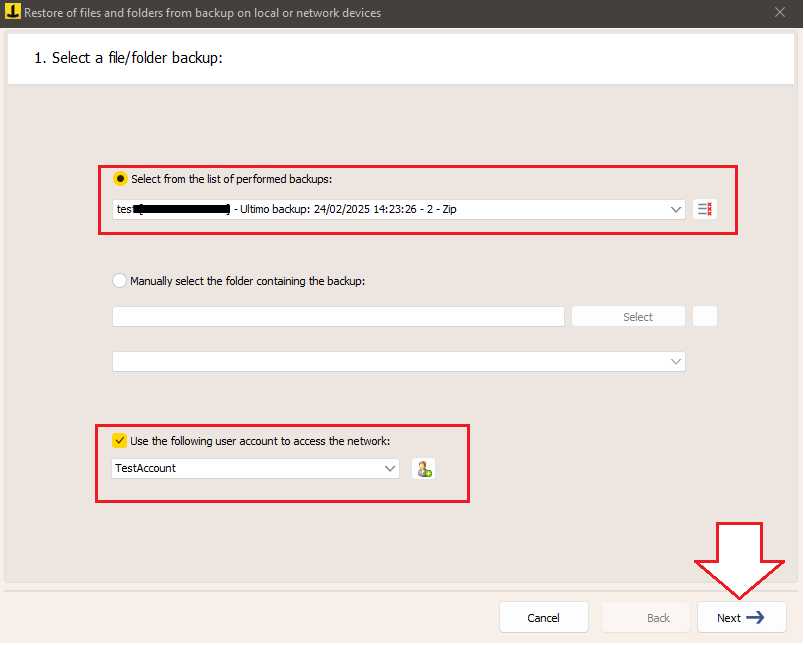← All Tutorials
Restore files and folders from local or network path
Iperius Backup is an advanced and versatile solution for data protection, designed to offer a wide range of backup and restore functionalities.
Iperius allows you to perform backups not only locally, on the network, and to any cloud or FTP destination, but also to protect databases (SQL, MySQL, Postgres, and Oracle), ESXi and Hyper-V virtual machines, and Office 365 accounts (Exchange, OneDrive, SharePoint, and Teams).
In this tutorial, we will focus on the procedure for restoring files and folders saved to a local or network path (both normal and compressed), a crucial function for recovering data in case of damage or loss.
Note: remember that this type of file and folder restore can only be used if the option “Create restore information files for automatic restore” is enabled in the backup Job (usually enabled by default)
To perform the restore of files and folders, first, let’s check if we have the latest version of Iperius Backup.
Then, click on the restore function as shown below:
With Iperius Backup, you can automatically restore full, incremental, and differential backups, including compressed ones, allowing you to restore the backup to a specific date and time.
You can select the backup from an automatically compiled list or manually input the desired path:
For example, we can select the compressed backup (with the suffix “- zip“) from the list of backups.
In the case of a network path, as in our example, it may be necessary to also provide the network account to access the backup folder.
Set the parameters as shown and proceed:

In this step, we have all the backup details, including the backup type (full or incremental/differential), whether the backup is compressed, the folder size, and its contents.
For example, let’s select the last available incremental backup and proceed.
You can choose to restore to the original folder or to a different folder. Most importantly, you can choose whether to restore only the selected folder or to reconstruct the entire backup structure.
For instance, we can choose to restore just the content of the incremental folder or restore the full backup plus the incrementals, thus rebuilding the folder’s state up to the desired restore point:
In the summary, let’s verify that all the parameters have been set correctly and start the restore:
If the restore completes successfully, we will find the destination folder fully restored.
For any questions or doubts regarding this tutorial,
Contact us